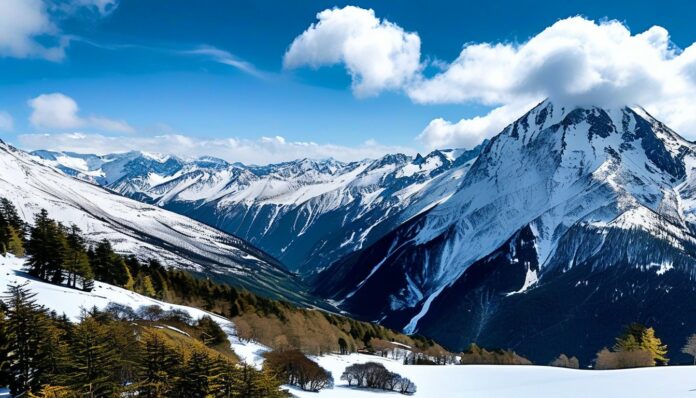Every climber preparing to conquer a mountain packs an oxygen tank and warm clothing. This is because the concentration of oxygen and air temperature are significantly lower at the summit compared to sea level.
Why is it Always Colder in the Mountains?
At first glance, it seems that hot air should rise and cold air should sink, but this rule doesn’t apply in this context.
Mountains, these magnificent creations of nature, attract millions of travelers like a magnet. Many mountains now have funiculars installed, allowing anyone to enjoy the view from the highest points. If possible, choose open seats (and dress warmly in advance) because you’ll be able to feel how the air temperature drops by 1 degree Celsius for every 100 meters you ascend.
This trend stops at around 10-12 kilometers above Earth, in the tropopause—a layer of the atmosphere where the temperature stops decreasing and starts increasing. But let’s focus on why mountains are colder.
Distance from the Sun
The distance between the Sun and Earth is an astounding 150 million kilometers, so the fact that mountain peaks are closer to the fiery orb does not affect their heating intensity. In simple terms, a few kilometers make no difference.
Absorption and Reflection of Heat
The warmth we feel in cities, villages, forests, and other places on Earth is not direct thermal energy from the Sun. Most of the solar radiation reaches the Earth’s surface. Some of this energy is absorbed, and some is reflected back into space. The absorbed energy is what warms the air, water, and soil.
Atmospheric Composition and Pressure
The atmosphere is a mixture of gases enveloping our planet. It creates a certain pressure on Earth due to the gravitational pull on the air. However, as altitude increases, this pressure decreases. Consequently, warm air rising becomes more rarefied due to the reduced pressure. There is less weight of air pressing down from above—this process is called adiabatic cooling.
As a result, air molecules have more space to “wander,” reducing the likelihood of collisions and rebounds. They become less capable of absorbing and retaining heat in large quantities, leading to lower temperatures at higher altitudes.
Clean Air
If you’ve ever climbed Elbrus or a smaller mountain, you’ve probably noticed that the air is much cleaner than in the city or even in the forest. This is also explained by adiabatic cooling: at high altitudes, rarefied air cannot hold the dirt and dust lifted from the Earth’s surface. Similarly, it cannot hold water droplets, resulting in dry air in the mountains.
This is why mountain tops are often cold and snowy, despite being closer to the Sun.
